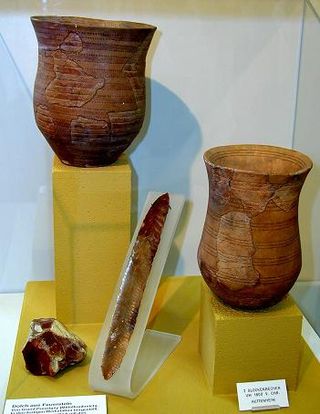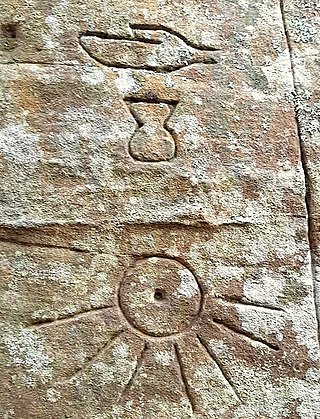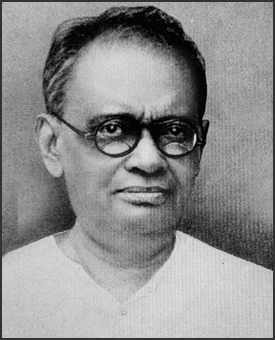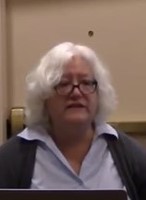Related Research Articles

Zahi Abass Hawass is an Egyptian archaeologist, Egyptologist, and former Minister of State for Antiquities Affairs, serving twice. He has also worked at archaeological sites in the Nile Delta, the Western Desert, and the Upper Nile Valley.

Penn Museum, formerly known as The University of Pennsylvania Museum of Archaeology and Anthropology, is an archaeology and anthropology museum at the University of Pennsylvania. It is located on Penn's campus in the University City neighborhood of Philadelphia, at the intersection of 33rd and South Streets. It also is close enough for Drexel University students to walk or take Septa transportation services. Housing over 1.3 million artifacts, the museum features one of the most comprehensive collections of middle and near-eastern art in the world.

Peter John Ucko FRAI FSA was an influential English archaeologist. He served as Director of the Institute of Archaeology at University College London (UCL), and was a Fellow of both the Royal Anthropological Institute and the Society of Antiquaries. A controversial and divisive figure within archaeology, his life's work focused on eroding western dominance by broadening archaeological participation to developing countries and indigenous communities.

Prehistoric archaeology is a subfield of archaeology, which deals specifically with artefacts, civilisations and other materials from societies that existed before any form of writing system or historical record. Often the field focuses on ages such as the Stone Age, Bronze Age and Iron Age, although it also encompasses periods such as the Neolithic. The study of prehistoric archaeology reflects the cultural concerns of modern society by showing interpretations of time between economic growth and political stability. It is related to other disciplines such as geology, biology, anthropology, historiography and palaeontology, although there are noticeable differences between the subjects they all broadly study to understand; the past, either organic or inorganic or the lives of humans. Prehistoric archaeology is also sometimes termed as anthropological archaeology because of its indirect traces with complex patterns.

Culture-historical archaeology is an archaeological theory that emphasises defining historical societies into distinct ethnic and cultural groupings according to their material culture.

Archaeological forgery is the manufacture of supposedly ancient items that are sold to the antiquities market and may even end up in the collections of museums. It is related to art forgery.
Archaeology is the study of human activity in the past, primarily through the recovery and analysis of the material culture and environmental data that they have left behind, which includes artifacts, architecture, biofacts and cultural landscapes.
Feminist archaeology employs a feminist perspective in interpreting past societies. It often focuses on gender, but also considers gender in tandem with other factors, such as sexuality, race, or class. Feminist archaeology has critiqued the uncritical application of modern, Western norms and values to past societies. It is additionally concerned with increasing the representation of women in the discipline of archaeology, and reducing androcentric bias within the field.
Archaeological ethics refers to the moral issues raised through the study of the material past. It is a branch of the philosophy of archaeology. This article will touch on human remains, the preservation and laws protecting remains and cultural items, issues around the globe, as well as preservation and ethnoarchaeology.

Ramaprasad Chanda was an Indian anthropologist, historian and archaeologist from Bengal. A pioneer in his field in South Asia, Chanda's lasting legacy is the Varendra Research Museum, he established in Rajshahi, a leading institute for research on the history of Bengal. He was the first head of the Department of Anthropology at the University of Calcutta from 1920- 1921. He was also a professional archaeologist and worked in the Archaeological Survey of India. Chanda was one of the founders the Indian Anthropological Institute and was its president during 1938–1942. He represented India in the first International Congress of Anthropology held in London in 1934. He had done original research on the somatic characters of Indian populations by using ancient Indian literature and challenged Herbert Hope Risley's theory of Indian races. Riley was the first Census Commissioner of India.

Claire Smith, is an Australian archaeologist specialising in Indigenous archaeology, symbolic communication and rock art. She served as Dean (Research) of the College of Humanities, Arts and Social Sciences at Flinders University in 2017-2018 and, prior to that, as head of the Department of Archaeology. She served two terms as president of the World Archaeological Congress from 2003 to 2014 and greatly increased the organization's size and visibility. Among her many publications is the Encyclopedia of Global Archaeology.

Archaeology or archeology is the study of human activity through the recovery and analysis of material culture. The archaeological record consists of artifacts, architecture, biofacts or ecofacts, sites, and cultural landscapes. Archaeology can be considered both a social science and a branch of the humanities. It is usually considered an independent academic discipline, but may also be classified as part of anthropology, history or geography.

Indigenous archaeology is a sub-discipline of Western archaeological theory that seeks to engage and empower indigenous people in the preservation of their heritage and to correct perceived inequalities in modern archaeology. It also attempts to incorporate non-material elements of cultures, like oral traditions, into the wider historical narrative. This methodology came out of the global anti-colonial movements of the 1970s and 1980s led by aboriginal and indigenous people in settler-colonial nations, like the United States, Canada, and Australia. Major issues the sub-discipline attempts to address include the repatriation of indigenous remains to their respective peoples, the perceived biases that western archaeology's imperialistic roots have imparted into its modern practices, and the stewardship and preservation of indigenous people's cultures and heritage sites. This has encouraged the development of more collaborative relationships between archaeologists and indigenous people and has increased the involvement of indigenous people in archaeology and its related policies.

Nicholas J. Saunders is a British academic archaeologist and anthropologist. He was educated at the universities of Sheffield, Cambridge, and Southampton. He has held teaching and research positions at the National Autonomous University of Mexico, the University of the West Indies, Dumbarton Oaks, Washington D.C., and at University College London, where he was Reader in Material Culture, and undertook a major British Academy sponsored investigation into the material culture anthropology of the First World War (1998–2004). As of 2014 Saunders was Professor in the Department of Anthropology and Archaeology at the University of Bristol, where he was responsible for the MA programmes in historical archaeology and conflict archaeology. As of 2018, he is Emeritus Professor of Material Culture in that department. He is a prominent contributor to the nascent field of conflict archaeology, and has authored and edited numerous academic publications in the field. In addition to his research specialising in the anthropology of 20th-century conflicts and the archaeology of World War I theatres in Belgium, France and the Middle East, Saunders has also conducted extensive fieldwork and research in pre-Columbian and historical archaeology of the Americas. He has been involved with major museum exhibitions in London, Ypres (Belgium), Tübingen (Germany), and at the Centre Pompidou-Metz (France). Saunders has investigated and published on material cultures and landscapes of Mesoamerica, South America, and the Caribbean. His most recent research has been on the aesthetics of brilliance and colour in indigenous Amerindian symbolism, an extensive survey investigation of the Nazca Lines in Peru, the anthropological archaeology of twentieth-century conflict and its legacies along the Soca (Isonzo) Front on the Slovenian-Italian border, and the conflict artworks of the Chinese Labour Corps on the Western Front during and after the First World War.
The Treasure Valuation Committee (TVC) is an advisory non-departmental public body of the Department for Culture, Media and Sport (DCMS) based in London, which offers expert advice to the government on items of declared treasure in England, Wales, and Northern Ireland that museums there may wish to acquire from the Crown.

Rosemary A. Joyce is an American anthropologist and social archaeologist who has specialized in research in Honduras. They were able to archeologically confirm that chocolate was a byproduct of fermenting beer. She is also an expert in evaluating the archaeological records of society and the implications that sexuality and gender play in culture.
Alice Stevenson is a British archaeologist and museum curator. She is Senior Lecturer in Museum Studies at UCL's Institute of Archaeology and a specialist in Predynastic and Early Dynastic Egyptian archaeology.
Lynn Meskell is an Australian archaeologist and anthropologist who currently works as a Professor at the University of Pennsylvania.
Caroline Rosa Wickham-Jones MA MSocSci FSA HonFSAScot MCIfA(25 April 1955 – 13 January 2022) was a British archaeologist specialising in Stone Age Orkney. She was a lecturer at the University of Aberdeen until her retirement in 2015.
Sara Perry is an archaeologist. Her research focuses on public archaeology and the use of digital media in archaeology and heritage. She is the Director of Research and Engagement at Museum of London Archaeology.
References
- ↑ "Fellows Directory - Society of Antiquaries". www.sal.org.uk. Retrieved 19 May 2019.
- ↑ "Antiquity Trust". Antiquity. Retrieved 14 August 2023.
- ↑ Patterson, Thomas C. (1999). "The Political Economy of Archaeology in the United States". Annual Review of Anthropology. 28: 155–174. doi:10.1146/annurev.anthro.28.1.155.
- ↑ Holtorf, Cornelius (2004). "Doing Archaeology in Popular Culture". The Interplay of Past and Present.
- ↑ Tacon, Chippindale, Paul, Christopher (1994). "Australia's Ancient Warriors: Depictions of Fighting in the Rock Art of Arnhem Land, N.T.". Cambridge Archaeological Journal. 4 (2): 211–248. doi:10.1017/s0959774300001086. S2CID 162983574 – via AnthroSource.
{{cite journal}}: CS1 maint: multiple names: authors list (link) - ↑ Johnson, Matthew (2010). Archaeological Theory: An Introduction. Wiley-Blackwell. ISBN 9781444360417. [ verification needed ]
- ↑ Meskell, Pels, Lynn., Peter (2005). Embedding Ethics. Oxford. ISBN 1845200470. [ verification needed ]
- ↑ Johnson, Matthew, 1962- (2010). Archaeological theory : an introduction (2nd ed.). Chichester, West Sussex, UK: Wiley-Blackwell. ISBN 9781405100144. OCLC 439212070.
{{cite book}}: CS1 maint: multiple names: authors list (link) - ↑ Embedding ethics. Meskell, Lynn., Pels, Peter. (English ed.). Oxford, UK: Berg. 2005. ISBN 9781845209964. OCLC 290552305.
{{cite book}}: CS1 maint: others (link) - ↑ De Cesari, Chiara (2017). "The Devil is in the Detail: Museum Displays and the Creation of Knowledge". Museum Anthropology. 40 (1): 18–35 – via AnthroSource.
- ↑ Moser, Stephanie (2010). "The Devil is in the Detail: Museum Displays and the Creation of Knowledge". Museum Anthropology. 33 (1): 22–32. doi:10.1111/j.1548-1379.2010.01072.x – via AnthroSource.
- ↑ "Stephanie Moser".